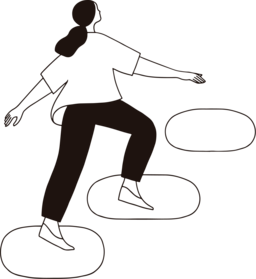
Anxiety Disorder
Overview
Anxiety is a common emotion that everyone feels. It is a necessary aspect of our natural survival instinct. It serves as a force that drives us to do the tasks necessary to live successfully. While it is often seen as a negative emotion, it is not something we can nor want to eliminate.
However, anxiety is not always healthy. Most people experience it as an accepted part of life but, for a significant segment of the population, anxiety is felt on a disproportionate level. Instead of leading to actions that improve the person’s life, it causes dysfunction, whether in driving inaction or actions that are inappropriate.
The presence of difficult emotions like anxiety is not a sign of a mental illness. Rather, something is only considered a mental health disorder when it impedes on a person’s ability to function. As such, it is when a person is unable to manage anxiety that they may receive a diagnosis.
This article will cover what is considered an anxiety disorder, along with the types of anxiety disorders and their symptoms. It will also go into the various treatments for anxiety disorders, including medication, therapy, and their alternatives.
What is Anxiety Disorder?
An anxiety disorder is a mental health condition that leads to excessive anxiety, including in instances where it is not warranted. It presents in both physical and psychological symptoms which cause distress and make it difficult to function as normal.
When a person has an anxiety disorder, the symptoms persist regardless of external circumstances. Everyone feels anxiety, and it may feel overwhelming during times of particular stress, but someone with an anxiety disorder struggles with anxiety even when their life and environment are running smoothly.
How do you know if you have an anxiety disorder or are simply feeling normal anxiety?
What is the Difference Between Experiencing Anxiety and Anxiety Disorder?
Anxiety is an emotion that serves an important purpose. It tells a person that there is a threat, driving them to either take action or avoid the situation. Both of these responses can be healthy.
For example, a person who has a job interview scheduled may feel anxiety and use it as a catalyst to prepare. On the other hand, a person who sees flashes of lightning outside may feel anxiety and decide not to go for a walk.
There are unhealthy ways to respond to anxiety in these same examples. The first person may choose to miss the job interview to avoid potential failure. The second person may be reactive and decide to go for the walk in an ill-advised attempt to fight the sense of danger.
Every person experiencing anxiety responds in both healthy and unhealthy ways on different occasions. However, if anxiety only arises on occasion, it cannot be considered an anxiety disorder.
An anxiety disorder is only diagnosed when a person experiences persistent anxiety for an extended period of time, causing unhealthy behaviors which make it difficult to function. These behaviors often lead to a pattern of avoidance, while some people frequently act out with impulsive decisions or actions.
The way the anxiety presents is different according to the type of disorder. For example, an anxiety attack differs from a panic attack in the duration and severity. The commonality between them is that both impede functioning.
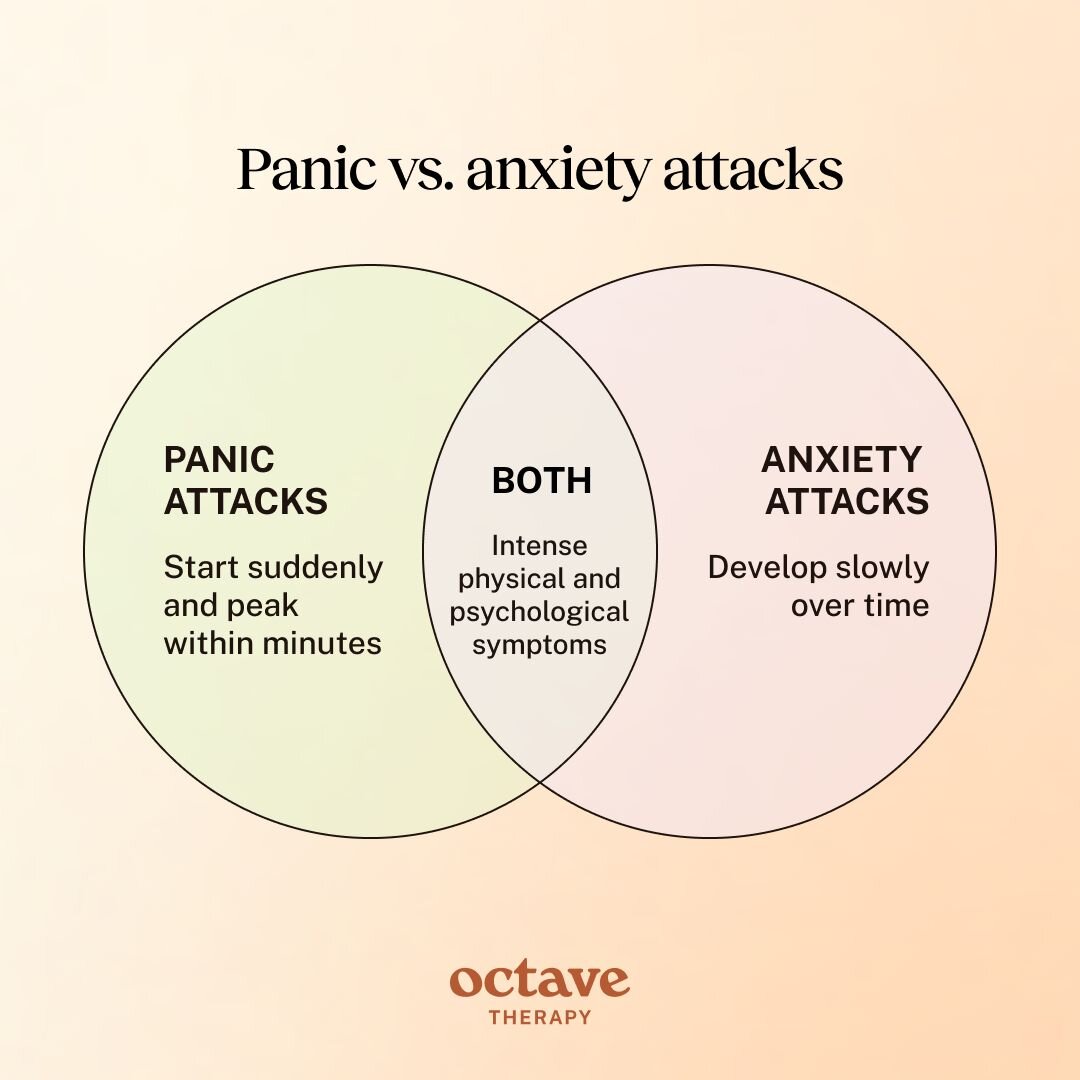
How to Know if You Have an Anxiety Disorder
Even someone without an anxiety disorder might struggle at times when they feel intense anxiety. How do you know if you actually have an anxiety disorder?
One of the main differentiators between anxiety and an anxiety disorder is that an anxiety disorder is chronic. It can only be diagnosed if the symptoms have frequently been present for at least six months.
So, while a person might experience debilitating anxiety when faced with particularly difficult circumstances, this is not a sign of an anxiety disorder if they are able to function once the situation has changed or they have adapted to it.
What does it mean for anxiety to impede your ability to function?
In psychiatric diagnoses, functioning refers to the capacity to live your day-to-day life as necessary. Someone without a disorder can take care of their needs in their home life, maintain relationships, fulfil their obligations at work or school, eat appropriately, and get an adequate amount of sleep.
A person with an anxiety disorder may struggle with one or more of these aspects. For example, the symptoms of social anxiety disorder (SAD) may cause a person to avoid get-togethers and become increasingly isolated, while struggling to work in a team at the office.
The feeling of anxiety is paired with thoughts and behaviors that lead to disproportionate or inappropriate reactions to situations.
When is a reaction disproportionate?
Inappropriate or disproportionate reactions to situations occur when the person overthinks a minor occurrence or acts impulsively in an attempt to rectify a perceived issue.
For example, a person with generalized anxiety disorder (GAD) completes a task at work. Later that day, their supervisor comes into their office, providing them feedback and asking them to make some minor amendments. The person feels intensified anxiety, shame, and a sense of overwhelm, convincing themselves that they have made a major error. Their thoughts go to the worst case scenarios, such as getting fired or even losing their home and ability to buy groceries.
This is not to say that people without anxiety disorders do not overthink or imagine the worst case scenario sometimes. However, when someone does not have an anxiety disorder, the associated feelings fade relatively quickly and they stop thinking about it before long.
Anxiety disorders do not only affect thoughts and feelings, but impact behaviors as well.
How do anxiety disorders impact behavior?
We tend to think of anxiety as an internal experience that may indirectly lead to behaviors. Anxiety leads to thoughts and feelings and consequent actions are affected by overthinking and a conscious attempt to alleviate the anxiety.
However, anxiety disorders also trigger unconscious behaviors or reactions. Common examples include procrastination, nail-biting, impulsive decision-making, and withdrawal.
For example, a person with panic disorder faces a situation in which they have previously suffered a panic attack. They constantly check their pulse and breathing, drink water excessively and avoid eating, in an instinctive attempt to prevent another panic attack.
Types of Anxiety Disorders
There are a number of different common types of anxiety disorders. These include:
- Generalized anxiety disorder (GAD): anxiety presents in day-to-day life situations and persists even when there is no specific trigger. The person feels overwhelmed, often overthinks things, and avoids or reacts to potentially triggering situations.
- Agoraphobia: the intense fear of situations where one may feel overwhelmed without the ability to leave or escape, or get help. They avoid new places, crowds, large, open areas, enclosed spaces, and may even avoid leaving their home altogether.
- Other specific phobias: such as arachnophobia, claustrophobia, and acrophobia (fear of heights). This goes beyond a general fear or unease around the trigger. A person with arachnophobia, for example, fears spiders even when they are not present and makes contingencies to avoid coming into contact with them.
- Panic disorder: the person experiences regular but spontaneous panic attacks, during which they feel overwhelmed with the fear of catastrophe, death, and even abstract concepts like meaning and purpose.
- Social anxiety disorder: anxiety around social situations and interactions, with an intense fear of being judged and a fixation on the potential for rejection and humiliation. This often leads to blushing, sweating, and stammering, as well as the fear of these reactions.
- Separation anxiety disorder: excessive anxiety when separated from a loved one, with the fear that something bad will happen to the person or they themselves will be harmed when apart from them. It is most common in children but also affects as many as one in fifty adults.
- Selective mutism: not speaking in specific situations out of anxiety and fear. Selective mutism is the least common anxiety disorder. It is most common in young children, but also affects adolescents and adults.
Although these are each individual disorders, it is common for a person with one anxiety disorder to suffer from at least one other.
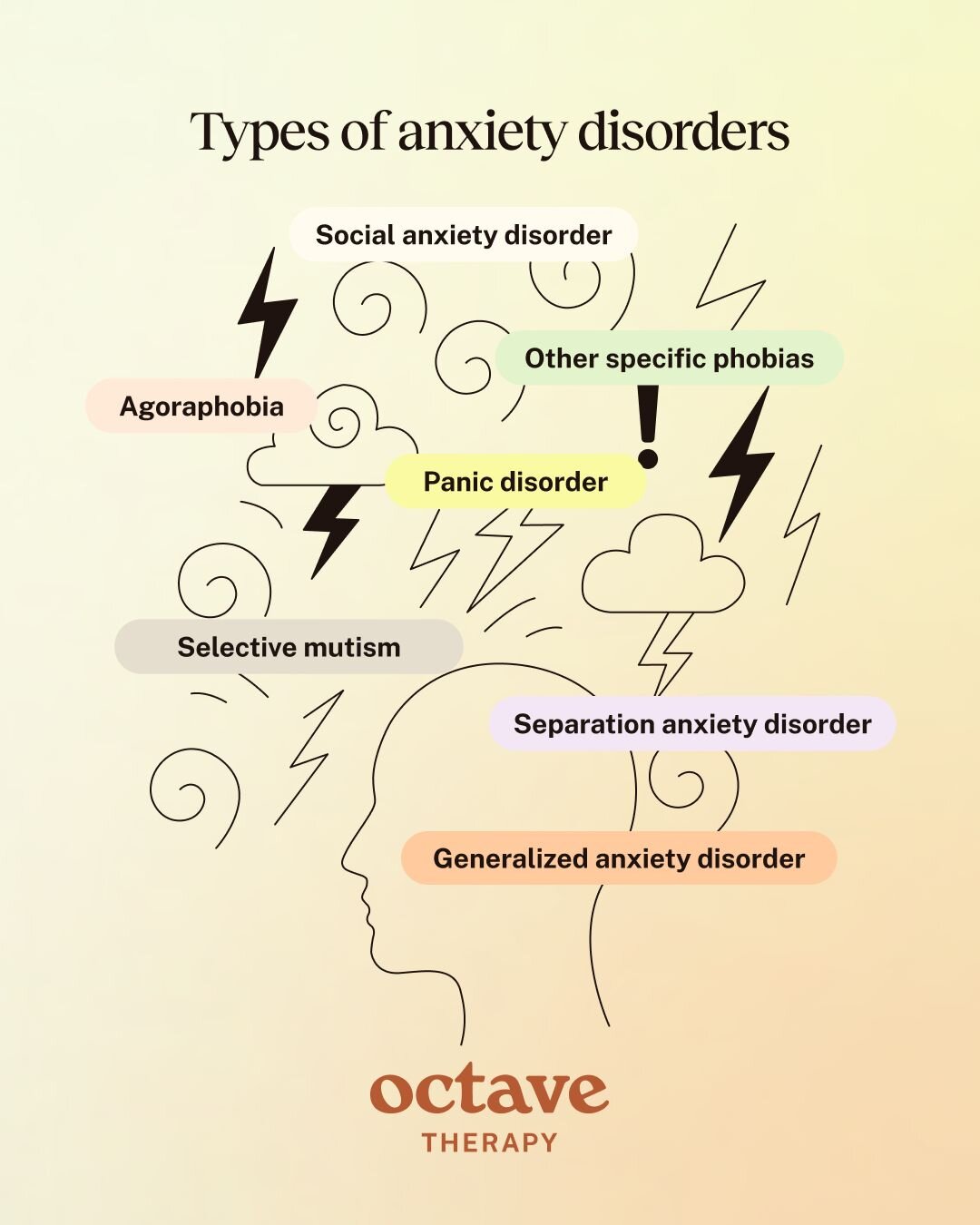
Is Anxiety Disorder Common?
Anxiety disorders are the most common mental illness and affect almost one in five Americans every year.
- Generalized anxiety disorder affects approximately 3.1% of American adults annually. It is the most commonly diagnosed anxiety disorder, as the symptoms are most likely to lead a person to seek attention from a physical or mental health professional.
- Social anxiety disorder (SAD) affects approximately 7.1% of American adults annually. However, many people with SAD do not seek treatment as they are unaware that their symptoms are indicative of a disorder. Instead, they internalize it as shyness or a part of their personality they perceive as shameful.
- Specific phobias affect over 12% of Americans over the course of their lifetimes. As with social phobia, many instances of specific phobias go undiagnosed.
- Panic disorder affects 2.7% of American adults annually.
- Agoraphobia affects up to 1.7% of American adults each year.
- Separation anxiety disorder affects about 4% of American children annually, as well as about 1.9% of adults.
- Finally, selective mutism affects between 0.47% and 0.76% of Americans, making it the least common anxiety disorder.
Research suggests that about 50% of people with an anxiety disorder have at least one co-morbid anxiety disorder.
What Are Anxiety Symptoms?
Anxiety disorders are characterized by physical, psychological, and behavioral symptoms. Each type of anxiety disorder has unique symptoms, but there are many symptoms that are common among all anxiety disorders.
Psychological symptoms of anxiety disorders include:
- The feeling of panic, fear, dread, and unease
- Feeling on edge or irritable
- Uncontrollable, obsessive thoughts or fixations
- Racing thoughts
- Catastrophic thinking
- Difficulty concentrating
Physical symptoms of anxiety disorders include:
- Restlessness
- Heart palpitations
- Shortness of breath
- Muscle tension
- Cold or sweaty hands
- Dry mouth
- Nausea
- Difficulty sleeping or insomnia
Behavioral symptoms of anxiety disorders include:
- Avoiding anxiety-proving situations
- Compulsive behaviors, such as repeatedly asking for reassurance or checking one’s pulse
- Fidgeting or pacing
- Procrastination and avoiding making decisions
- Isolating oneself
- Self-medication or substance use
In order for an anxiety disorder to be diagnosed, symptoms must have been impeding the person’s functioning for an extended period of time (six months or longer for most anxiety disorders).
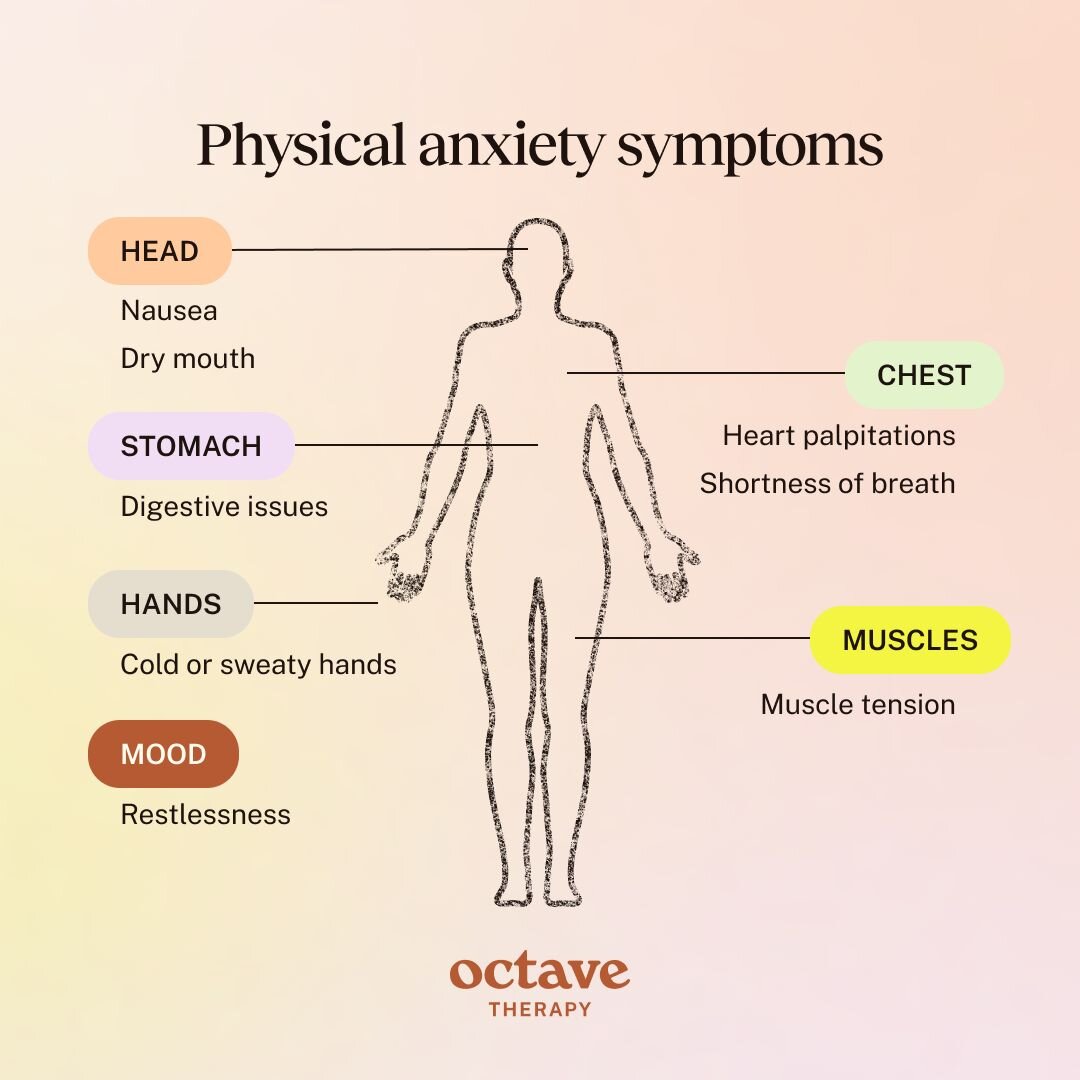
Causes of Anxiety Disorder
The causes of anxiety disorders are varied. They have roots in both nature and nurture, with the body and the person’s environment each playing a major role.
The physical causes of anxiety disorders include:
Chemical imbalances
Chemicals in the brain are responsible for regulating mood, emotions, and stress responses. While anxiety is a necessary emotion for survival, an imbalance in these chemicals can cause excessive anxiety even when there is no danger to be addressed.
The main chemical imbalances associated with an anxiety disorder are:
- Serotonin deficiency: leading to struggles with emotional stability and resilience against stress.
- GABA (Gamma-Aminobutyric Acid) deficiency: creating difficulties in calming the nervous system.
- Norepinephrine dysregulation: causing the fight-or-flight response to become overactive.
- Dopamine imbalance: suppressing the motivation necessary to overcome the avoidance triggered by anxiety.
Brain changes
Neuroscience has shown a correlation between people with anxiety and changes in parts of the brain. These include:
- Overactivity in the amygdala: causing exaggerated fear responses to a wide array of perceived threats.
- Weakened prefrontal cortex regulation: preventing the suppression of fear signals from the amygdala.
- Hippocampus dysfunction: processing and storing neutral experiences as dangerous incidents.
- Hyperactive hypothalamic-pituitary-adrenal (HPA) axis: releasing excess cortisol as a response to stress and generating a constant sense of hyperawareness.
Genetics
Research has shown that anxiety disorders have a genetic component. A person with a family history of anxiety disorders is significantly more likely to develop an anxiety disorder themselves. These studies have controlled for the impact of the environment, another potential cause of anxiety disorders.
Environmental factors
The person’s environment is connected to the likelihood of anxiety disorders. This includes both the environment in which they were raised, as well as the environment they currently inhabit.
The following childhood environments are commonly associated with anxiety disorders:
- Trauma and adverse childhood experiences (ACEs): including the presence of abuse, neglect, losing a parent, and substance use disorders. The lack of a sense of safety leads to hyperawareness and persistent anxiety.
- Anxiety in parents: especially when untreated and unregulated. The child consistently receives the message that the world is full of danger.
In the person’s adult life, the following environments could lead to anxiety disorders:
- Major life changes or stressful events: such as marriage, the birth of a child, divorce, job loss, and financial instability, triggering anxiety disorders in those with a predisposition.
- Use of stimulants: including caffeine, as well as prescribed and illegal drugs, can exacerbate anxiety.
Chronic stress
The presence of chronic stress in one’s work and/or home life can trigger an anxiety disorder, with frequent worrying and burnout diminishing the person’s capacity for regulating anxiety. This is exacerbated when chronic stress or its triggers lead to difficulty sleeping, lack of appetite, and lack of physical activity.
Diagnosing Anxiety Disorder
A person who suspects they or a loved one might have an anxiety disorder should seek out a healthcare professional for a diagnosis. In order to determine and provide a diagnosis, the professional will do various tests.
Although your GP can diagnose an anxiety disorder, psychiatrists have the specific qualifications and training to do so. They will carry out a physical exam, in which they look for physical signs and symptoms of anxiety disorders. They will also do an assessment during which they ask questions to determine if the psychological and behavioral symptoms of anxiety are present.
Based on the diagnostic criteria outlined by the official diagnostic manuals, they will come to a diagnosis based on which symptoms are present and their severity.
You can also ask your therapist if they think you might have an anxiety disorder. However, while therapists are trained to recognize and treat anxiety disorders, only a medical professional like a psychiatrist can make an official diagnosis and prescribe medication.
Management and Treatment of Anxiety Disorder
Seeing a professional for a diagnosis is the first step towards managing and treating an anxiety disorder. Based on their assessment, they will work with you to create a treatment program, recommending medication, therapy, or a combination of both.
Medication For Anxiety Disorders
Various medications have proven effective at treating anxiety disorders. Your healthcare professional will determine the best course of action for you, depending on your circumstances.
There are three main types of medication prescribed for anxiety disorders:
Antidepressants
Certain antidepressants, especially those that increase serotonin levels, are prescribed for anxiety disorders. While it generally takes two weeks or longer for the full effects to be felt, these medications are effective in the long-term and are non-addictive.
Benzodiazepines
Benzodiazepines, often referred to as “benzos,” enhance the effect of GABA which has a calming effect on the nervous system. They work quickly – within 30 to 60 minutes – to provide short-term relief. However, they are habit-forming and can cause dependency. They are usually prescribed for short-term use for severe anxiety attacks or panic attacks, as well as for difficulty sleeping.
Beta-blockers
Beta-blockers can reduce the physical symptoms of anxiety, including shaking, sweating, trembling, and a racing heart. They can have an indirect affect on the person’s mood, but are most often used for managing performance anxiety and social anxiety.
Therapy for Anxiety Disorders
A therapist will help you learn to manage the anxiety while also exploring the environmental causes of it. You begin to recognize the messaging that you have internalized throughout your life, giving you clarity on the thoughts you need to challenge.
There are two main types of therapy for anxiety disorders.
Cognitive-behavioral therapy (CBT)
Cognitive-behavioral therapy (CBT) is one of the most effective types of therapy for treating anxiety disorders. CBT works on the understanding that feelings, thoughts, and behaviors all affect one another. As such, challenging the thoughts and changing the behaviors associated with anxiety lowers the severity of the emotion.
A common CBT technique is identifying and challenging anxious thoughts. A person with an anxiety disorder experiences repetitive anxious thoughts that seem true. The messaging behind them is internalized and they rarely think to question these thoughts.
The therapist helps the person determine which thoughts are at the forefront of their anxiety, before methodically deconstructing the thought and identifying its fallacies. For example, a person identifies the thought that, ‘I will make a mistake and lose my job.’ They then challenge the assumption that they will make a mistake and the assertion that a mistake will lead to them losing their job. They may also challenge the belief implicit in the thought that losing their job is a catastrophic outcome.
The therapist also helps identify and challenge behavioral patterns associated with anxiety. For example, a person with GAD is encouraged to drive to the gym in spite of their fear of getting lost as a low stakes method to chip away at the anxiety. Over time, they gain confidence and are able to take on scenarios that once seemed impossible to navigate.
Exposure therapy
Exposure therapy is used as a treatment for phobias, panic attacks, social anxiety, and symptoms of a variety of disorders. It involves gradual exposure to an anxiety-provoking situation, such as the presence of the object of a phobia, the place where a panic attack occurred, or a social gathering.
The therapist ensures that the person feels safe, knowing that there are contingencies in place. As the person becomes more used to exposure to the situation, they build a tolerance and can take on greater challenges.
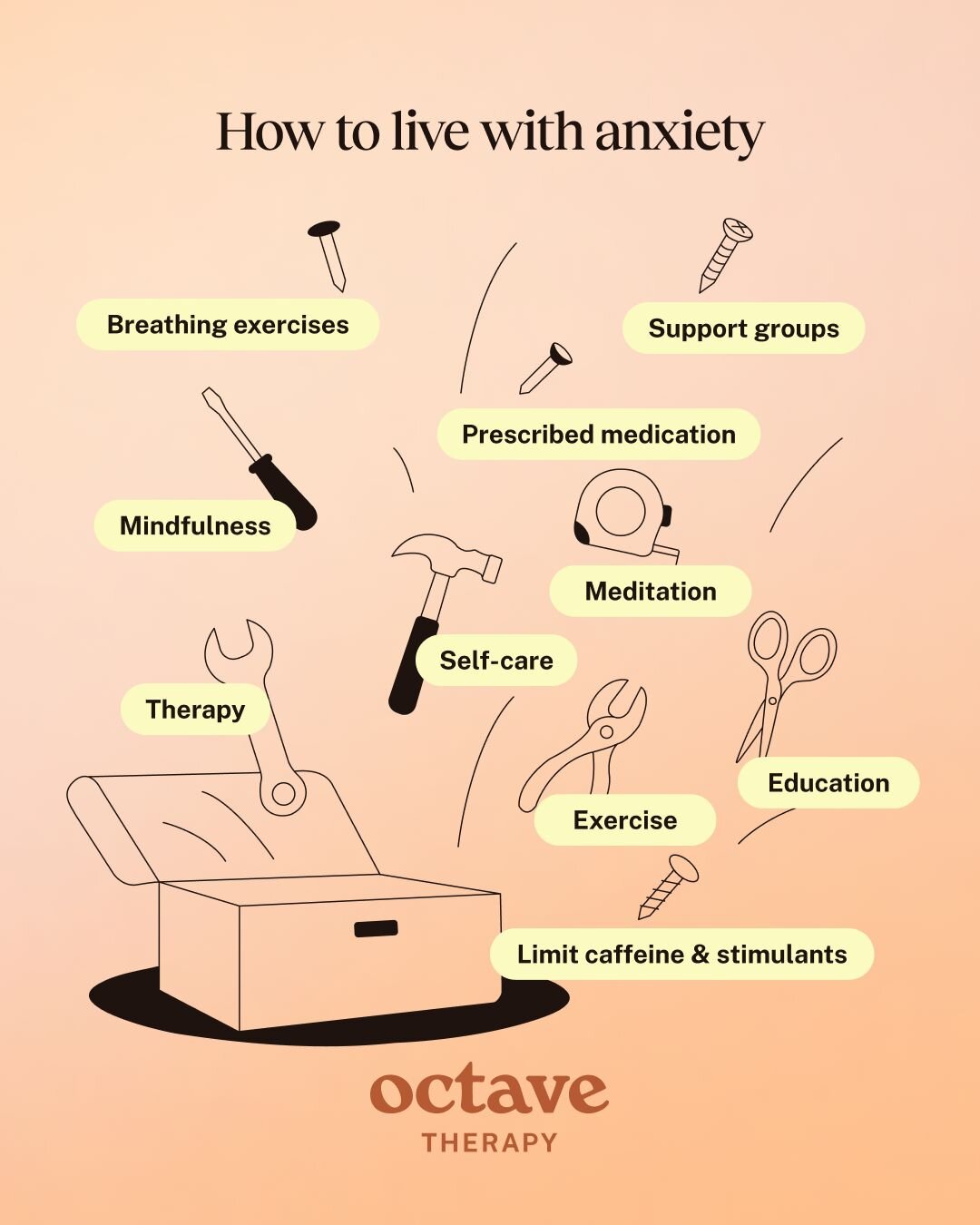
What Should I Expect With Anxiety Disorder?
If an anxiety disorder is left untreated, you can expect difficulty functioning in various aspects of your life. These struggles include:
- Difficulty in social situations: especially for people with social anxiety disorder. However, even if you have another type of anxiety disorder, symptoms can make it difficult to focus, engage, or motivate yourself to attend social events in the first place.
- Major depressive episodes: anxiety and depression often co-occur. The dysfunction caused by an untreated anxiety disorder makes it difficult to regulate other emotions and live a fulfilling life. You experience isolation and it becomes harder to engage in activities you enjoy.
- Substance use disorder: many people with untreated anxiety disorders end up self-medicating with alcohol and drugs. At first, they seem to provide immediate relief and the person becomes dependent on them. Substance use disorder causes even more difficulties, and the symptoms of the anxiety disorder are only exacerbated.
- Suicide: in severe cases, the emotional turmoil can make it difficult for a person to see a route to a better life. In order to escape the pain, they might attempt or die by suicide.
- Increased risk of cardiac events: the physical impact of an anxiety disorder can be harmful or even fatal. Chronic anxiety has been linked to a higher risk of heart attacks and other cardiac events.
As you can see, it is crucial to get help for an anxiety disorder. Left untreated, the symptoms are likely to get worse. Help is available and there is no need to put yourself through further suffering.
How to Live With Anxiety
In addition to medication and therapy, there are a number of additional ways to manage anxiety in your day-to-day life, including if you are not struggling with an anxiety disorder. For a person receiving treatment for an anxiety disorder, these methods can improve your outcomes and provide additional relief.
- Stress management: chronic stress can cause physical and emotional suffering if not addressed. Some of the most effective ways to relieve stress include meditation, breathing exercises, mindfulness and self-care.
- Support groups: the realization that you are not alone can relieve some of the burden. Over time, people in support groups learn to lean on each other when times are tough.
- Education: learning more about an anxiety disorder is important for learning to navigate day-to-day challenges.
- Lifestyle changes: limit caffeine and stimulants. Physical exercise can improve your mood and provide time out from anxious thoughts.
When to Seek Help for Anxiety
If you or a loved one are experiencing the symptoms mentioned earlier, it is time to seek help. Don’t wait for the symptoms to get worse. You deserve to get the treatment you need to live a happier, healthier life.
Anxiety disorders are common mental illnesses that can significantly lower your quality of life. There are multiple types of anxiety disorders, each with their own signs and symptoms. Anxiety disorders often go undiagnosed as people are not aware that what they are experiencing is not normal.
The good news is that treatment is available, with medications and therapy effective for recovering and learning to manage feelings of anxiety.
